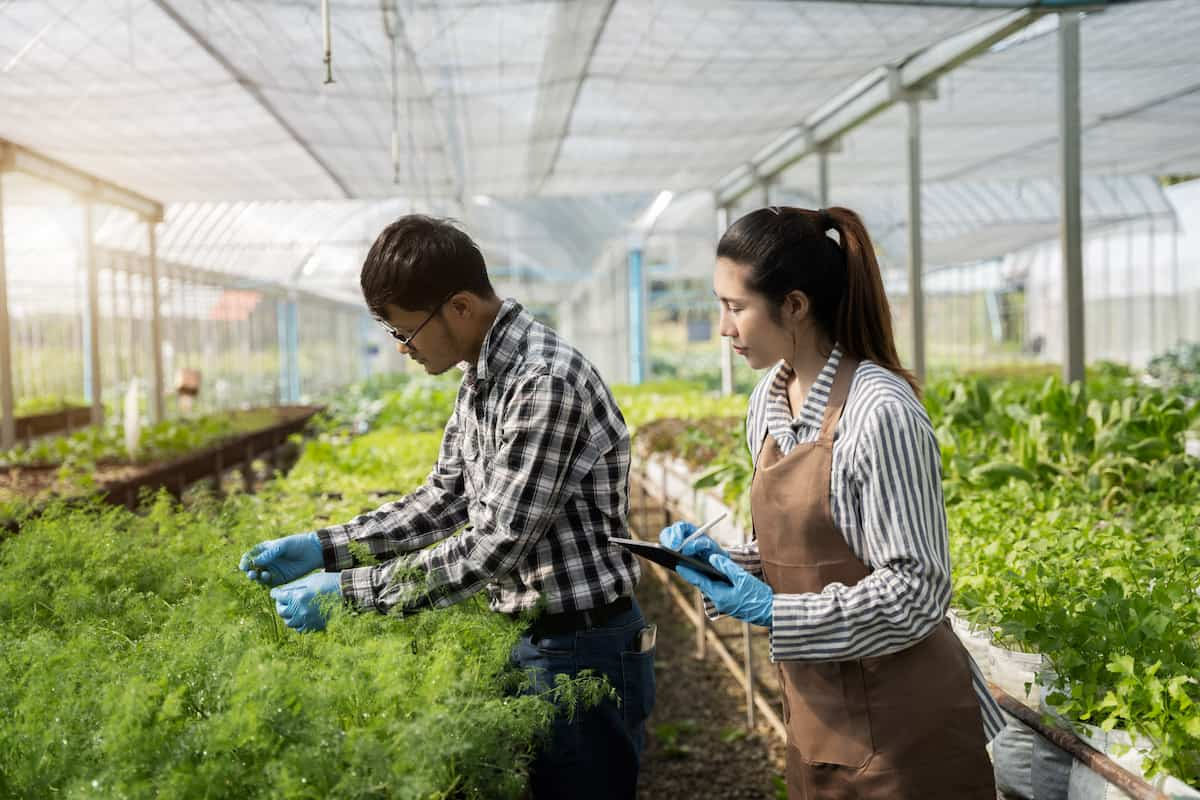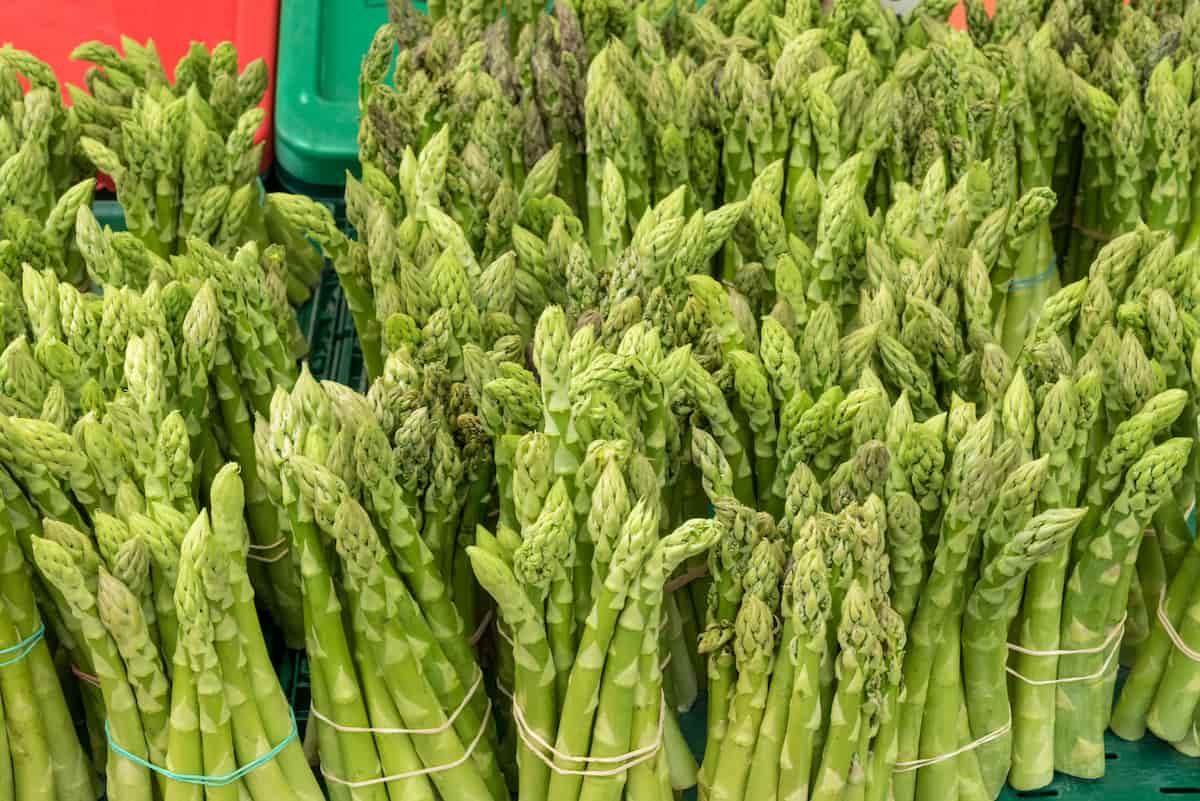Growing asparagus hydroponically is an innovative and environmentally friendly way to cultivate this healthy, perennial vegetable. Not only does this method save space, but it also conserves water, eliminates the need for soil, and can produce asparagus year-round. This detailed article will cover the various aspects of growing asparagus hydroponically, including the benefits of setting up the system, choosing the right variety, maintaining the nutrient solution, and harvesting.

How to Grow Asparagus Hydroponically
Benefits of Hydroponic Asparagus Cultivation
Water Conservation
Hydroponic systems use a lot less water than standard ways of growing plants in soil. Nutrient-rich water is continuously recycled, reducing water consumption by up to 90%. This makes hydroponics a sustainable option, particularly in areas with limited water resources.
Space Efficiency
Hydroponic systems are incredibly space-efficient, allowing you to grow more asparagus in a smaller area. Vertical farming techniques can be employed to maximize space utilization further, making it possible to cultivate asparagus in urban environments or locations with limited arable land.
Pest and Disease Control
Hydroponic systems reduce the risk of soil-borne pests and diseases by eliminating soil from the cultivation process. This makes it easier to maintain a healthy growing environment for your asparagus plants, leading to higher yields and better-quality produce.
Year-round Production
Hydroponic systems provide a controlled environment, enabling you to grow asparagus throughout the year, regardless of seasonal fluctuations. This assures a constant supply of fresh produce and lets you sell asparagus during the off-season when prices are higher.
Setting up the Hydroponic System
Choose the Right System
Several types of hydroponic systems include nutrient film technique (NFT), aeroponics, and deep water culture (DWC). Each system has its advantages and disadvantages. The DWC system is recommended for asparagus, as it provides ample space for the extensive root system and supports the tall, upright growth habit of asparagus plants.
Create a Support Structure
Asparagus plants can grow tall and may require support to prevent falling over. Design your hydroponic system with a sturdy support structure that can accommodate the height and weight of fully-grown asparagus plants.
Ensure Adequate Lighting
Asparagus requires ample light for healthy growth. If you are growing your asparagus indoors or in a greenhouse, you must invest in supplemental lighting, such as LED grow lights. These lights should provide full-spectrum light to mimic sunlight and should be placed at the appropriate distance from the plants to prevent burning or shading.
Choosing the Right Asparagus Variety
Consider Planting Male Hybrids
Male hybrid asparagus varieties tend to be more productive and disease-resistant than their female counterparts. Examples of male hybrid varieties include Jersey Giant, Jersey Knight, and Jersey Supreme. These varieties also have thicker spears, which are highly valued in the market.
Experiment with Purple Varieties
Purple asparagus varieties, such as Purple Passion and Sweet Purple, have a sweeter taste and unique appearance that can attract consumers. These varieties can add diversity to your hydroponic asparagus crop and may command a higher price in the market.
In case you missed it: How to Grow Stevia in Greenhouse: A Step-By-Step Guide for Seed to Harvest

Maintaining the Nutrient Solution
Monitor pH and Nutrient Levels
It’s essential to regularly monitor the pH and nutrient levels of your hydroponic solution to ensure optimal plant health. Asparagus prefers a pH range of 6.0 to 6.8. Use a pH meter to measure and adjust the pH accordingly. Additionally, keep an eye on nutrient levels and replenish them to give your plants the essential elements they require for growth.
Choose the Right Nutrient Formula
Asparagus has specific nutrient requirements that differ from other crops. Select a nutrient formula specially designed for asparagus or consult a hydroponic specialist to create a custom blend. Key nutrients for asparagus include nitrogen, phosphorus, potassium, calcium, and magnesium, among others.
Maintain Optimal Water Temperature
Asparagus plants prefer a water temperature of around 65-75°F (18-24°C). Monitor the temperature of your nutrient solution and use a water chiller or heater to maintain the ideal range. This will help promote optimal nutrient uptake and overall plant health.
Caring for Your Hydroponic Asparagus
Prune Regularly
Pruning is essential for maintaining healthy asparagus plants. Remove any yellow or dead foliage to promote better air circulation and prevent the spread of diseases. Additionally, prune any female plants that produce berries, as these can sap energy from the plant and reduce overall yield.
Monitor and Control Pests
While hydroponic systems are less susceptible to pests, remaining vigilant and monitoring your asparagus plants for signs of infestations is crucial. Common pests include asparagus beetles, aphids, and spider mites. Use integrated pest management strategies, such as introducing beneficial insects, to control these pests without using chemical pesticides.
Provide Proper Spacing
To ensure your asparagus plants have adequate space to grow, space the crowns about 12-18 inches (30-45 cm) apart within the rows and 3-4 feet (90-120 cm) between rows. This will help promote good air circulation and prevent the plants from competing for resources.
Maintain Optimal Humidity Levels
Asparagus prefers moderate humidity levels, generally around 50-70%. If you are growing your asparagus in a greenhouse or indoors, monitor humidity levels and use a humidifier or dehumidifier to maintain the ideal range. Excessive humidity can encourage the growth of mold and mildew, while low humidity levels can cause plant stress.
Harvesting Your Hydroponic Asparagus
Know When to Harvest
Asparagus spears can be harvested when they reach a height of 7-9 inches (18-23 cm) and have a diameter of at least 1/4 inch (0.6 cm). The tips should be tightly closed, and the spears should be firm to the touch.
Use the Proper Harvesting Technique
To harvest asparagus, use a sharp knife to cut the spears at their base, just below the growing medium’s surface. Be careful not to damage neighboring spears or the crown of the plant.
Allow Plants to Mature Before Harvesting Heavily
Allowing your asparagus plants to establish themselves and mature for the first two years after planting is essential. Limit your harvest during these initial years to encourage strong root development and ensure long-term productivity.
In case you missed it: How to Grow Dragon Fruit in a Greenhouse: A Step-By-Step Guide for Seed to Harvest

Conclusion
Growing asparagus hydroponically offers numerous benefits, from water conservation to year-round production. Remember that asparagus requires patience, but your hydroponic asparagus garden will reward you with years of delicious produce with proper care and attention.
- Feed Your Flock for Less: Top 10 Tips to Save on Chicken Feed
- Ultimate Guide to Ossabaw Island Hog: Breeding, Raising, Diet, and Care
- Hatching Answers: The Top 10 Reasons Your Chickens Aren’t Laying Eggs
- Eggs and Economics: Breaking Down the Cost of Raising Backyard Chickens
- Defend Your Greens: Proven Methods to Keep Iguanas Out of Your Garden
- Ultimate Guide to Cinnamon Queen Chicken: A Comprehensive Guide for Beginners
- Ultimate Guide to California Tan Chicken: Breeding, Raising, Diet, Egg-Production and Care
- Ultimate Guide to Marsh Daisy Chicken: Breeding, Raising, Diet, and Care
- 10 Types of Chicken Farming Businesses You Can Start for Profits